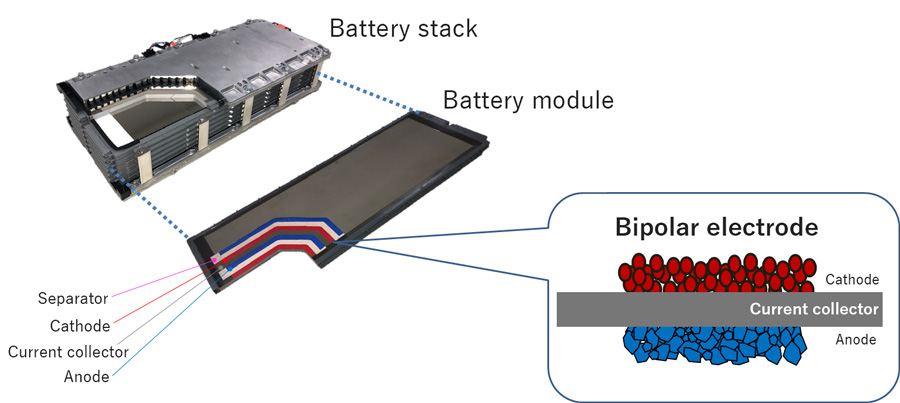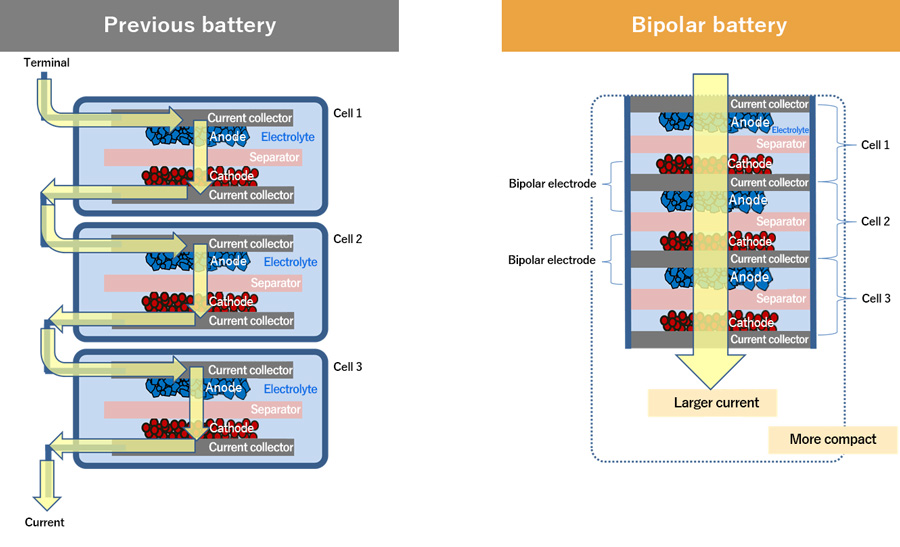Bipolar nickel-hydrogen battery for 2021 Toyota Aqua

(Images courtesy of Toyota)
Toyota’s new Acqua compact HEV comes with a bipolar nickel-hydrogen battery, a world first for a road vehicle according to the Japanese automotive giant (writes Peter Donaldson).
Conventional non-bipolar nickel-hydrogen batteries have a much lower energy density than lithium-ion versions but much longer service lives. Compared with the nickel-hydrogen battery in the previous-generation Aqua, says Toyota, the new one delivers 1.5 times the output from each cell and packs 1.4 times as many cells into the same volume, – effectively doubling the output of the earlier car’s battery.
Each cell contains a bipolar electrode plate in which a cathode is applied to one side of a current collector and an anode to the other,. Several of these structures are stacked together with separators between them form a battery.
In a patent published in April 2020 (JP6680644B2), Toyota refers to the electrodes as active material layers. It says each separator, which can be a non-woven polyolefin fabric, holds potassium hydroxide electrolyte, in the form of an aqueous solution or a gel.
Either or both of the active material layers can contain a conductive porous body that is bonded to the current collector. That puts the active material layer in electrical contact with the current collector plate, forming a conductive path through the thickness of the active material layer.
Toyota says battery internal resistance does not therefore increase excessively, even if the electrode’s active material layer becomes thick. It is this that allows the new battery to remain compact while increasing in capacity over its predecessor.
In comparison, each cell of the previous non-bipolar battery has two current collectors, one attached to the anode and the other to the cathode, with the separator between the two electrodes. In a stack of three non-bipolar cells, there are consequently six current collectors, but there are only four in a stack of three of the new cells. Needing fewer components also helps make the new battery lighter and less bulky than the old.
Toyota adds that the bipolar batteries’ larger active surface area and simpler construction also contribute to lower internal resistance, allowing larger currents to flow and therefore greater power output. In the Aqua, Toyota exploits this to improve responsiveness and acceleration from low speeds and to expand the range of speeds and thus the variety of urban driving conditions over which the vehicle can run on electricity alone.

The new Aqua also has an emergency power supply mode, in which its accessory outlet can supply 1.5 kW/100V AC as standard, enabling it to run domestic appliances, the company says.
The battery modules are flat and stack on top of each other to form a rectangular battery pack. This form factor is very different from that seen in some designs for spacecraft bipolar nickel-hydrogen batteries, which use gaseous hydrogen and a stack of cells contained in a single pressure vessel.
It is the robustness and long service life of batteries using nickel-hydrogen chemistry, which is particularly stable, that makes them attractive for spacecraft. For example, the Hubble Space Telescope’s first set of batteries were replaced after 18 years in orbit – 13 years longer than expected – although they were built to very high standards and managed very carefully.
While this latest battery technology is unlikely to be attractive for pure EVs, particularly high-end cars, they promise a combination of performance and longevity well-suited to hybrids.
ONLINE PARTNERS































